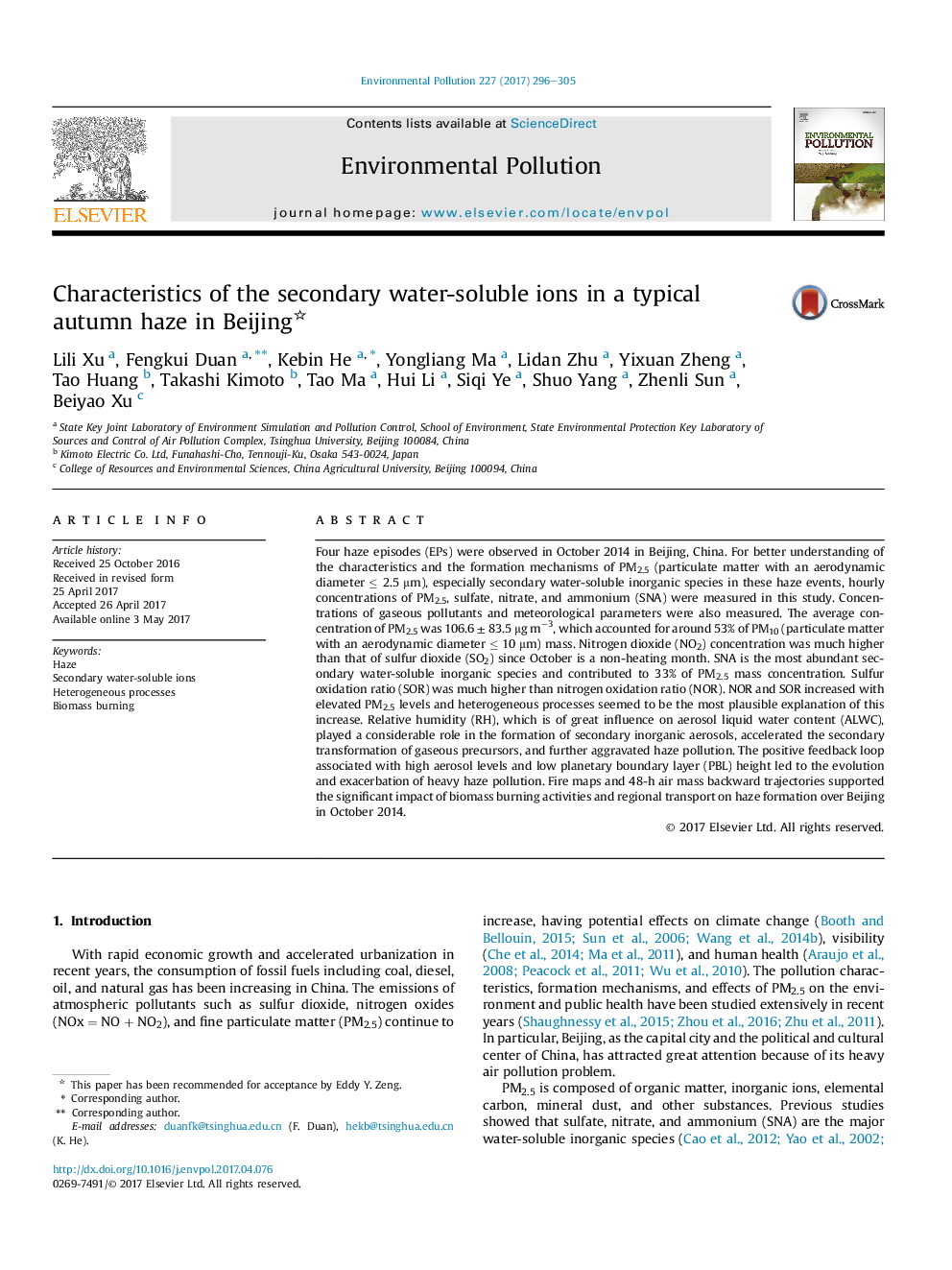| کد مقاله | کد نشریه | سال انتشار | مقاله انگلیسی | نسخه تمام متن |
|---|---|---|---|---|
| 5749150 | 1619146 | 2017 | 10 صفحه PDF | دانلود رایگان |
- SO42-, NO3â, NH4+ together accounted for about 32% of the total PM2.5 mass.
- NOR and SOR increased along with PM2.5 concentrations during severe haze periods.
- Meteorological factors played an important role in the formation of haze events.
- High RH, low wind speed, and low PBL height aggravated the haze pollution.
- Biomass burning from regional transport affected the haze formation.
Four haze episodes (EPs) were observed in October 2014 in Beijing, China. For better understanding of the characteristics and the formation mechanisms of PM2.5 (particulate matter with an aerodynamic diameter â¤Â 2.5 μm), especially secondary water-soluble inorganic species in these haze events, hourly concentrations of PM2.5, sulfate, nitrate, and ammonium (SNA) were measured in this study. Concentrations of gaseous pollutants and meteorological parameters were also measured. The average concentration of PM2.5 was 106.6 ± 83.5 μg mâ3, which accounted for around 53% of PM10 (particulate matter with an aerodynamic diameter â¤Â 10 μm) mass. Nitrogen dioxide (NO2) concentration was much higher than that of sulfur dioxide (SO2) since October is a non-heating month. SNA is the most abundant secondary water-soluble inorganic species and contributed to 33% of PM2.5 mass concentration. Sulfur oxidation ratio (SOR) was much higher than nitrogen oxidation ratio (NOR). NOR and SOR increased with elevated PM2.5 levels and heterogeneous processes seemed to be the most plausible explanation of this increase. Relative humidity (RH), which is of great influence on aerosol liquid water content (ALWC), played a considerable role in the formation of secondary inorganic aerosols, accelerated the secondary transformation of gaseous precursors, and further aggravated haze pollution. The positive feedback loop associated with high aerosol levels and low planetary boundary layer (PBL) height led to the evolution and exacerbation of heavy haze pollution. Fire maps and 48-h air mass backward trajectories supported the significant impact of biomass burning activities and regional transport on haze formation over Beijing in October 2014.
265
Journal: Environmental Pollution - Volume 227, August 2017, Pages 296-305
